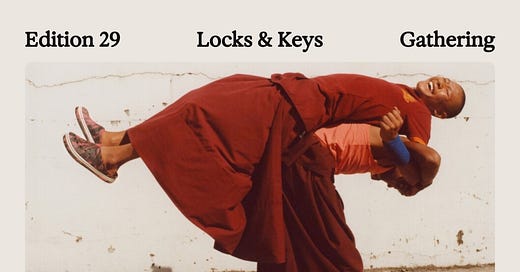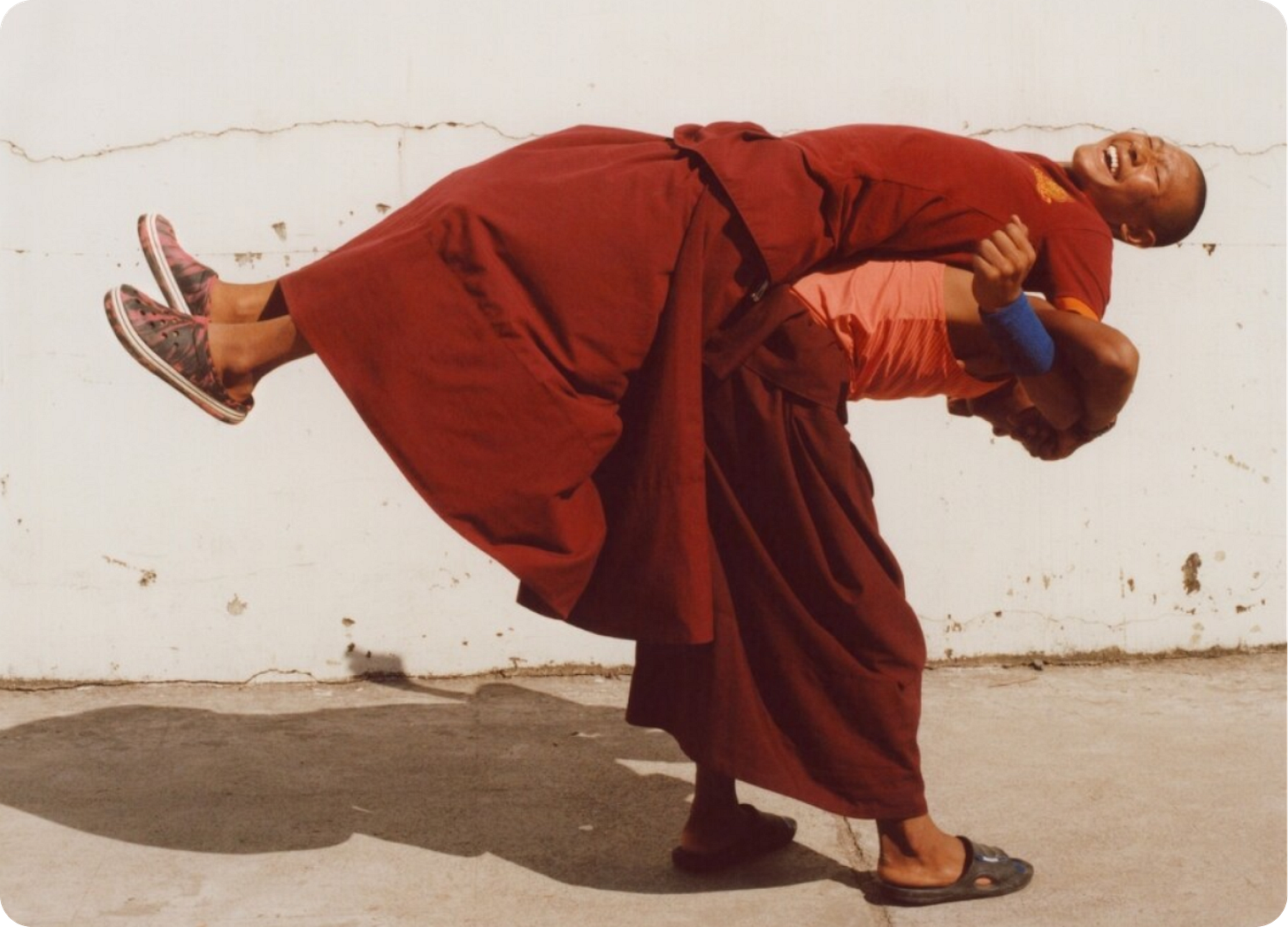WORKWORK29: Yoga Sutra 1.33 Four Locks & Keys // Learning to Gather
The four different types of people and the key to engaging with them & how I experienced a quantum growth leap by bringing friends together.
Inner Work: Yoga Sutra 1.33 Four Locks & Keys
Over the last year, I have put more intention into my friendships than ever before. So much of that work has been rooted in getting comfortable in my own values and then looking at my values through the lens of friendships. After months of journaling and introspection following encounters with other people, I now know that I value thoughtful, smart, independent, positive, unique, and silly humans in my close circle. I’ve invested in those relationships, been open to new friendships with people whom I see those qualities, and I’ve been okay with letting go of the self-inflicted pressure to engage with those in my life that don’t embody most of those qualities.
The exploration of my friendships is not complete. I am without a doubt still learning, still refining and still placing attention on relationships in my life. The ultimate goal is to attract and maintain peace with those closest to me. It’s been a beautiful journey thus far.
While I don’t feel capable, just yet, to walk others through the process of forming and cultivating aligned friendships in their life, I do want to share a simple but powerful teaching that really helped me. The foundation of my own relationship exploration began when I learned of yoga sutra 1.33, widely known as the Four Locks and Keys. It says:
“By cultivating attitudes of friendliness toward the happy, compassion for the unhappy, delight in the virtuous, and disregard toward the wicked, the mind-stuff retains its undisturbed calmness.”
Patanjali says that at any given moment, you can fit any person into one of these four categories: happy, unhappy, virtuous, or wicked. And he gives you the keys for how to engage with each if you want to maintain your inner peace. This sutra gave me the keys to meet any person, no matter how they interact with me, with an attitude that I feel good about in my heart.
When you see a happy person, make them your friend.
Sometimes it’s really easy to become jealous of others’ happiness or success, but “jealousy will not disturb the other person.” It will only “disturb your own serenity.” We must think to ourselves, how beautiful the world would be if we were all happy people. Then we should make that person our friend because being around happiness will only foster more happiness in your life. I love the quote, “A rising tide lifts all boats,” as a different way to think about this.
When you see an unhappy person, meet them with compassion.
When we meet an unhappy person, we must not judge what created the unhappiness or try to determine if they deserve it. We all know what it feels like to be unhappy and it’s very possible you could be unhappy tomorrow. Treat them with compassion and mercy. If you have the ability to help them in some small way, do so. This will not disturb your peace, but rather, give you the gift of understanding.
“Through compassion you find that all human beings are just like you.” – HH The Dalai Lama
When you see a virtuous person, delight in them.
When you see someone who is virtuous, do not envy them. Instead, delight in the joys of inspiration - seeing that such greatness is possible to achieve! These are your mentors or your models in the world.
When you see a wicked person, disregard them.
Sri Swami Satchidananda says not to advise someone who is having a wicked moment, as “wicked people seldom take advice.” It’s likely that if you try to advise them, you will lose your own peace. He or she will need to learn through their own experience. In the translation that I read, Satchidananda tells a little story to help paint the picture of the wicked.
We have been all four of these types of people at one point or another, so we can imagine what it looks like to encounter each. This yoga sutra helped me to become more aware of the people I am engaging with and how to respond to them. Sometimes I even use it to identify the type of person I am being at a given time! I hope you use this teaching as a tool to become more aware and maybe even kick off a deeper exploration of your friendships and those closest to you.
Learning How to Gather
Over the past two weeks, I have experienced a quantum leap of growth. I pushed through deep rooted fears and sparked new neural pathways. What on Earth brought me this newfound growth, you ask? Well, I hosted multiple events over the course of a week that brought my friends together.
For context, bringing people together has always been my biggest anxiety trigger. It’s easiest for me to go with the flow and do what others want to do but this year I have felt called to grow through it. The timing has been right:
I’ve spent years observing my partner whose calling is to bring people together
I’ve invested in my relationships and become clearer about the type of people I want around me (see Inner Work)
I have done a lot of mindset work. I mean A LOT. Most of which is rooted in building up my confidence and sense of self-worth.
I have studied and learned from others.
Below are a couple of resources that illuminated the idea that bringing people together can be purposeful and intentional. For me, that’s what felt right.
Book: The Art of Gathering: How We Meet and Why It Matters by Priya Parker
Resource: Hosting 101 by @christineist
When reflecting, here are some things that made my events easier and more purposeful:
The first event was not bound by space, money, or time. It was a BYO beach party and people could come and go as they please for free. It removed a lot of the logistical pressures.
I made flyers for each event on Figma that felt like me, allowing for more personalization.
For a dinner, I made a seating chart with name tags to intentionally place people next to others that they might not have sat next to otherwise.
On the back of the name tags, I wrote down 2 things that person has given to me over the past year that I’m thankful for. This helped ensure that every person felt special and like they were meant to be there. It also made it less about me and more about them.
I encouraged some conversation through a few scattered conversation starters. This gave me peace of mind that even if someone doesn’t know what to talk about with someone new, they had some form of common ground to get the conversation started.
I had people Venmo me for a general amount for dinner long before the event and then I took care of the remaining amount. This removed any attention to money and payment at the end of the meal, removing any day-of friction.
I went to a guided meditation class beforehand to center myself and my thoughts, which really helped calm my nerves.
Overall, sometimes the results of steady Inner Work don’t come to life until much later. Implementing your Inner Work out to the world is a scary thing (it feels like you are exposing yourself), but when you are ready, you will know. For me, it was bringing people together that allowed for a full step-change in my life. I am a different person today than I was two weeks ago because of it. Is there anyone else that can relate to this?






